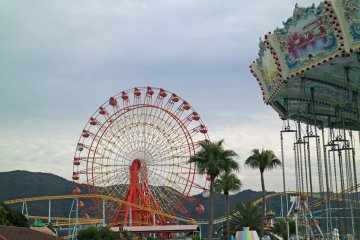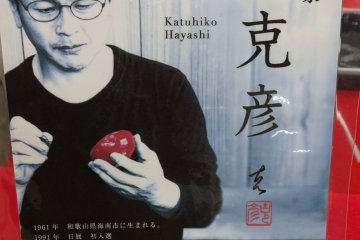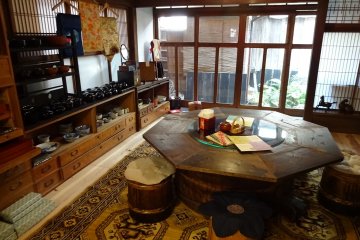Kishu Shikki, or Kishu lacquerware, is well-known in Japan. It is produced in Kuroe Town, Wakayama Prefecture. There are many places where you can go to see Kishu lacquerware, to buy some items, or even to experience the making of lacquerware products.
Let’s take a tour through Kuroe’s lacquerware places that visitors should not miss:
To get an overview of what is on offer visitors should come to the Uruwashi-kan, the Kishu lacquerware traditional industry center. There is a large showroom with a great variety of Kishu lacquerware items on display, and or purchase. A small museum on the upper floor explains more about the history of Kishu shikki. Here you can look and shop.
There is the opportunity to experience makie, Kishu lacquerware painting, first-hand at the Uruwashi-kan. On Saturdays and Sundays between 1pm and 3pm and (except second weekend of the month), or for groups of more than 10 upon registration on other days one can try doing a makie painting on lacquerware plates. Of course there is professional guidance and instruction by an experienced lacquerware craftsman. For a small fee of ¥ 1,000-1,600 per person you get the experience and you can take the lacquerware plate you decorated back home as personal souvenir from Kuroe.
At the Uruwashi-kan watch out for chopsticks and lunchboxes decorated by master craftsman Katuhiko Hayashi. Born in Kainan he grew up watching his grand-father and his father crafting lacquerware. On top of this long family tradition, he graduated from the Kyoto High School of Lacquer. He runs his own business in Kuroe, Urushiya Hayashi, and he specializes in makie decorations. The base items for his lacquerware are natural products found in Wakayama Prefecture, including Kishu cypress. His unique point is that he also experiments with unusual base materials, including orange peels and gourds. If you search for a traditional lacquerware present from Kishu then look no further: a pair of Hayashi-painted chopsticks with makie decoration, his Kishu cypress bento box, or his unusual orange or gourd sake cups are great gifts.
There are more showrooms than the Uruwashi-kan in Kuroe, of course. For example, the large showroom of Nakanishi Kogei Company. On display are the company’s series of lacquerware, including interior items, decorative items, stationery, jewelry boxes, ceremonial trays, series of red lacquerware and of black lacquerware, a series dedicated to Osaka actress Hiromi Ichida. The highlight are glasses (wine, champagne, beer, sake) with a lacquerware base and matching lacquerware chopsticks that show national flags. Would this be a good present for your loved ones back home?
Nearby the Uruwashi-kan, in walking distance, you will find a row of old merchant houses. They are the remaining houses from Kuroe’s heydays as lacquerware center during Japan’s feudal period. The Kuroe Nurimono-Kan is a Kishi Shikki retail shop set in a traditional house. The house itself, about 250 years old, is well worth a visit. It combines elements from Japan’s Edo Period (until the middle of the 19th century) and the Taisho Period (1920s/30s). There are many Kuroe Shikki and other locally crafted items on display and for sale. You can also learn more about the history of Kuroe from the owner, Ikehara Hiroki.
A little bit further down the road you will find another attractive traditional house. This house is about 150 years old and it houses a café and shop, called Ikeshoo, also run by Mr. Ikehara. Here you can take a rest over a cup of coffee and home-made cake. If you come for lunch, you can sample Kuroe Beef Curry.



















